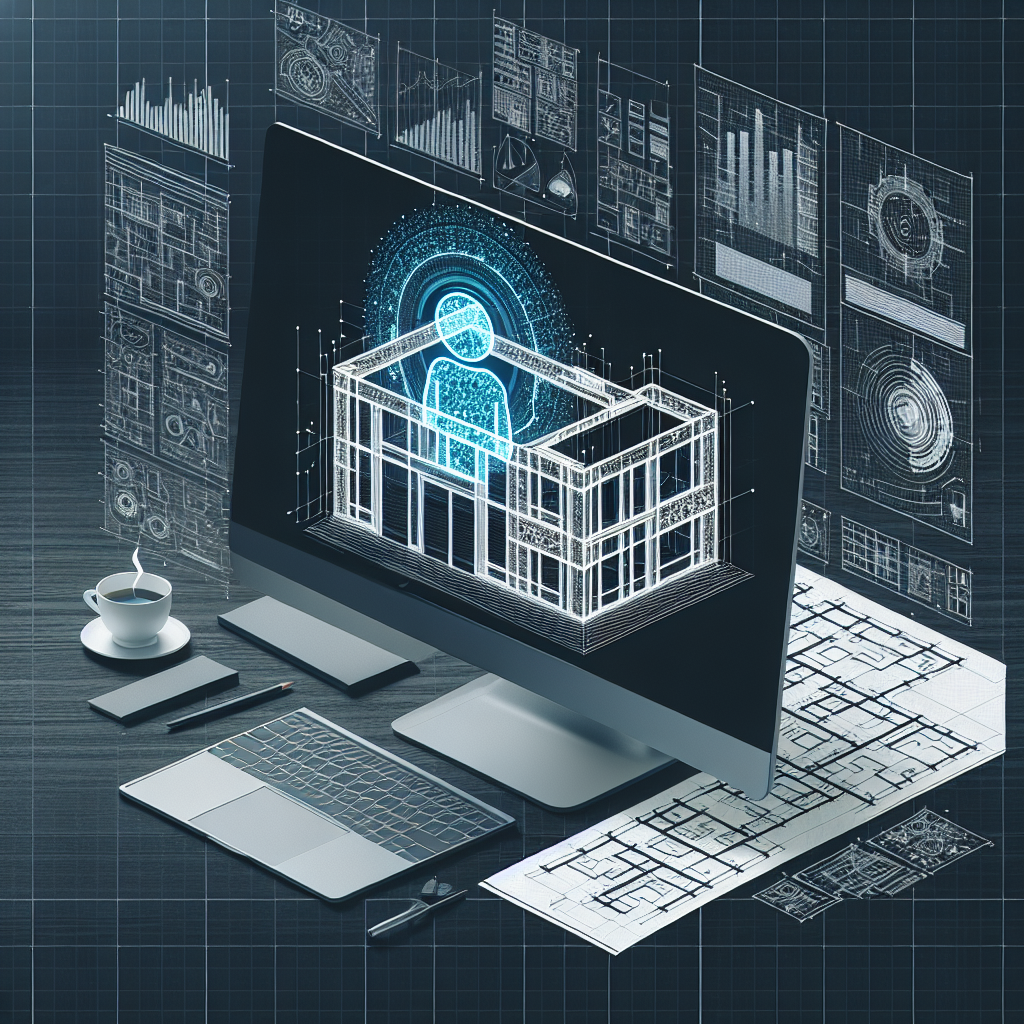Leveraging AI for Building Envelope Design
Introduction
The building envelope is a critical component of any structure, serving as the barrier between the interior and exterior environments. It plays a crucial role in determining the energy efficiency, comfort, and overall performance of a building. Designing a high-performing building envelope requires a deep understanding of various factors, including thermal performance, moisture management, air leakage, and structural integrity. With the advancements in artificial intelligence (AI) technology, architects and engineers now have powerful tools at their disposal to optimize the design process and create more sustainable and efficient building envelopes.
AI in Building Envelope Design
AI technology has the potential to revolutionize the way building envelopes are designed, by enabling architects and engineers to analyze complex data sets and optimize design parameters in real-time. AI algorithms can process large amounts of data quickly and accurately, allowing for more informed decision-making and better design outcomes. Here are some ways in which AI can be leveraged for building envelope design:
1. Energy Modeling: AI algorithms can analyze building performance data to generate accurate energy models and predict the energy consumption of a building based on its design parameters. By simulating different design scenarios, architects and engineers can optimize the building envelope for maximum energy efficiency and cost savings.
2. Optimization: AI can be used to optimize the design of building envelopes by considering multiple design parameters simultaneously. By using generative design algorithms, architects can explore a wide range of design options and identify the most optimal solution based on specific performance criteria.
3. Performance Monitoring: AI technology can be used to monitor the performance of a building envelope in real-time, by analyzing data from sensors and building management systems. This allows for early detection of potential issues, such as air leaks or moisture infiltration, and enables proactive maintenance and optimization of the building envelope.
4. Material Selection: AI algorithms can help architects and engineers select the most suitable materials for the building envelope based on performance criteria, such as thermal conductivity, durability, and cost. By analyzing vast amounts of data on building materials, AI can provide valuable insights into the best material choices for a specific project.
5. Design Collaboration: AI tools can facilitate collaboration between architects, engineers, and other stakeholders involved in the design process. By providing a centralized platform for sharing data and design ideas, AI technology can streamline communication and improve coordination, leading to more efficient and effective design outcomes.
Benefits of AI in Building Envelope Design
The use of AI technology in building envelope design offers several benefits, including:
1. Improved Performance: AI algorithms can help optimize the design of building envelopes for maximum energy efficiency, comfort, and durability. By considering multiple design parameters simultaneously, architects can create high-performing building envelopes that meet the specific needs of the project.
2. Cost Savings: By simulating different design scenarios and analyzing energy consumption data, AI technology can help architects identify cost-effective design solutions that minimize energy usage and operational costs over the lifetime of the building.
3. Sustainable Design: AI tools can assist architects in designing more sustainable building envelopes by optimizing energy performance, reducing waste, and selecting environmentally friendly materials. This can help reduce the carbon footprint of buildings and contribute to a more sustainable built environment.
4. Faster Design Process: AI algorithms can process large amounts of data quickly and accurately, enabling architects to explore a wide range of design options efficiently. This can help speed up the design process and allow for more iterative design iterations, leading to better design outcomes.
5. Enhanced Collaboration: AI technology can facilitate collaboration between different disciplines involved in building envelope design, such as architects, engineers, and sustainability consultants. By providing a centralized platform for sharing data and design ideas, AI tools can improve communication and coordination among team members.
FAQs
Q: How does AI technology help architects optimize the design of building envelopes?
A: AI algorithms can analyze building performance data, generate energy models, and simulate different design scenarios to identify the most optimal design solution based on specific performance criteria.
Q: Can AI technology assist in selecting the most suitable materials for the building envelope?
A: Yes, AI algorithms can analyze vast amounts of data on building materials and provide valuable insights into the best material choices based on performance criteria, such as thermal conductivity, durability, and cost.
Q: How can AI technology improve the energy efficiency of building envelopes?
A: By analyzing energy consumption data and simulating different design scenarios, AI technology can help architects optimize the design of building envelopes for maximum energy efficiency, leading to cost savings and reduced environmental impact.
Q: What are some of the benefits of using AI technology in building envelope design?
A: Some of the benefits of leveraging AI technology in building envelope design include improved performance, cost savings, sustainable design, faster design process, and enhanced collaboration among team members.
Conclusion
AI technology has the potential to revolutionize the way building envelopes are designed, by enabling architects and engineers to optimize design parameters, analyze complex data sets, and create more sustainable and efficient building envelopes. By leveraging AI algorithms for energy modeling, optimization, performance monitoring, material selection, and design collaboration, architects can achieve better design outcomes that meet the specific needs of the project. The use of AI technology in building envelope design offers numerous benefits, including improved performance, cost savings, sustainable design, faster design process, and enhanced collaboration among team members. As AI technology continues to evolve, it is essential for architects and engineers to embrace these tools and leverage their capabilities to create high-performing and sustainable building envelopes for the future.

